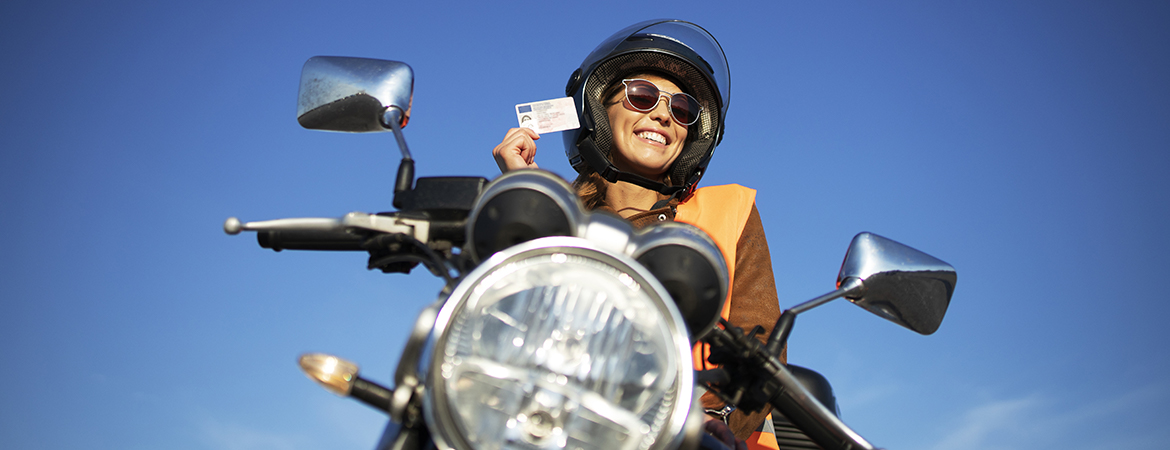Cruising Kentucky: 5 essential motorcycle safety tips
Cruising the backroads of the Bluegrass on a bike is a great way to experience the scenic beauty of our state. However, driving or riding on a motorcycle can also be dangerous. Safe riding requires preparation, coordination, and excellent judgment.

If you are a motorcyclist, you already know what a thrill it can be to hit the open road on a sunny day. Cruising the backroads of the Bluegrass on a bike is a great way to experience the scenic beauty of our state. However, driving or riding on a motorcycle can also be dangerous. According to the latest data by the National Highway Safety Traffic Administration (NHTSA), motorcyclists are about 28 times as likely as passenger car occupants to die in a motor vehicle traffic crash. Safe riding requires preparation, coordination, and excellent judgment.
With both the risks and the rewards of riding a motorcycle in mind, it’s important to brush up on these tips recommended by the Motorcycle Safety Foundation (MSF) for a safe and enjoyable riding experience:
- Get to know your motorcycle.
Not all motorcycles are alike, and they are certainly much different from the 4-wheeled vehicle you may be used to driving. It’s important to become familiar with your bike and its controls before hitting the highway. A great way to get to know your motorcycle is to put it on its center stand and sit on it. Adjust the mirrors, practice honking your horn, and activate your turn signals and lights. Getting to know your bike in a low-pressure situation will pay off when you’re out on the open road. It’s not fun—or safe—to be fumbling around when you are on the move.
- Wear the proper riding gear.
Helmet: The single most important piece of riding equipment is your helmet, according to the NHTSA. They report that wearing a DOT-approved helmet reduces the risk of dying in a crash by 37 percent. For information on how to choose an effective helmet, click here.
Eye protection: Riding without eye protection is a gamble. At any given moment, debris can fly up off the road and impair your vision. The MSF recommends always riding with a high-quality visor on your helmet, a pair of goggles, or shatterproof glasses.
Protective materials: Buy jackets, pants, boots, and gloves made of sturdy materials to protect you from the elements and potential abrasions. You can even find jackets and pants with rigid "body armor" inserts in critical areas for additional protection. Choose clothing that will increase your ability to be seen on the road, which leads us to our next tip...
- Increase your visibility to others.
Motorcyclists are often overlooked by other motorists. It’s understandable, two wheels aren’t exactly as noticeable as 18 wheels—but for this reason, motorcyclists need to be proactive in attracting the attention of others on the road. Wear bright, reflective clothing. Always warn others of your intentions by using your turn signals, and, if necessary, assist your turn signals with hand signals. Position your motorcycle where it can be seen. Don’t ride behind a large truck or cruise in another vehicle’s blind spot. Don’t be afraid to make your presence known by honking your horn.
- Educate and prepare your passengers.
Having company on a bike can be a lot of fun, but the rules of riding are just as important for them as they are for the driver. For starters, passengers need to wear the same gear that you do, including a helmet. Warn them of any hot places on the bike, like header pipes and mufflers, and make them aware of long shoelaces or loose pant legs that could catch on the rear wheel or chain parts. It is also important to never allow anyone to ride sidesaddle. Passengers should always straddle the bike with their feet securely planted on the footrests. While in motion, instruct your guest to hold onto you at your waist or hips, or to use the bike’s built-in passenger handholds. Improper leaning on the passenger’s part can also affect the steering, so let them know they have a role during the trip. Ask them to lean forward slightly when you leave from a stop or accelerate, and advise passengers not to lean to the side unless you do.
Also, remember that putting extra weight on the motorcycle will affect the bike’s handling, including braking capabilities. Take your passenger for a slow spin around the neighborhood before tackling the open road.
- Check the bike before you ride.
Spending a minute or two to check your bike before you hit the road will increase your chances of arriving at your destination safely. Check your tires, cables, lights, signals, horn, oil, and fuel before taking off, and as you begin to roll, check the brakes to make sure they’re working as they should. It’s also good to remember to bring a tool kit with you on each ride in case you need to tighten anything up along the way.
A total of 6,222 motorcyclists were killed in crashes in 2022, the highest number ever recorded and a 23% increase since 2019, according to the Insurance Institute for Highway Safety (IIHS). Wearing the proper protective equipment, knowing your motorcycle, and driving defensively can increase your chances of enjoying a safe cruise on the beautiful backroads of the Bluegrass.
>> Have you heard the rumblings? KFB now insures motorcycles! For more information, click here.
